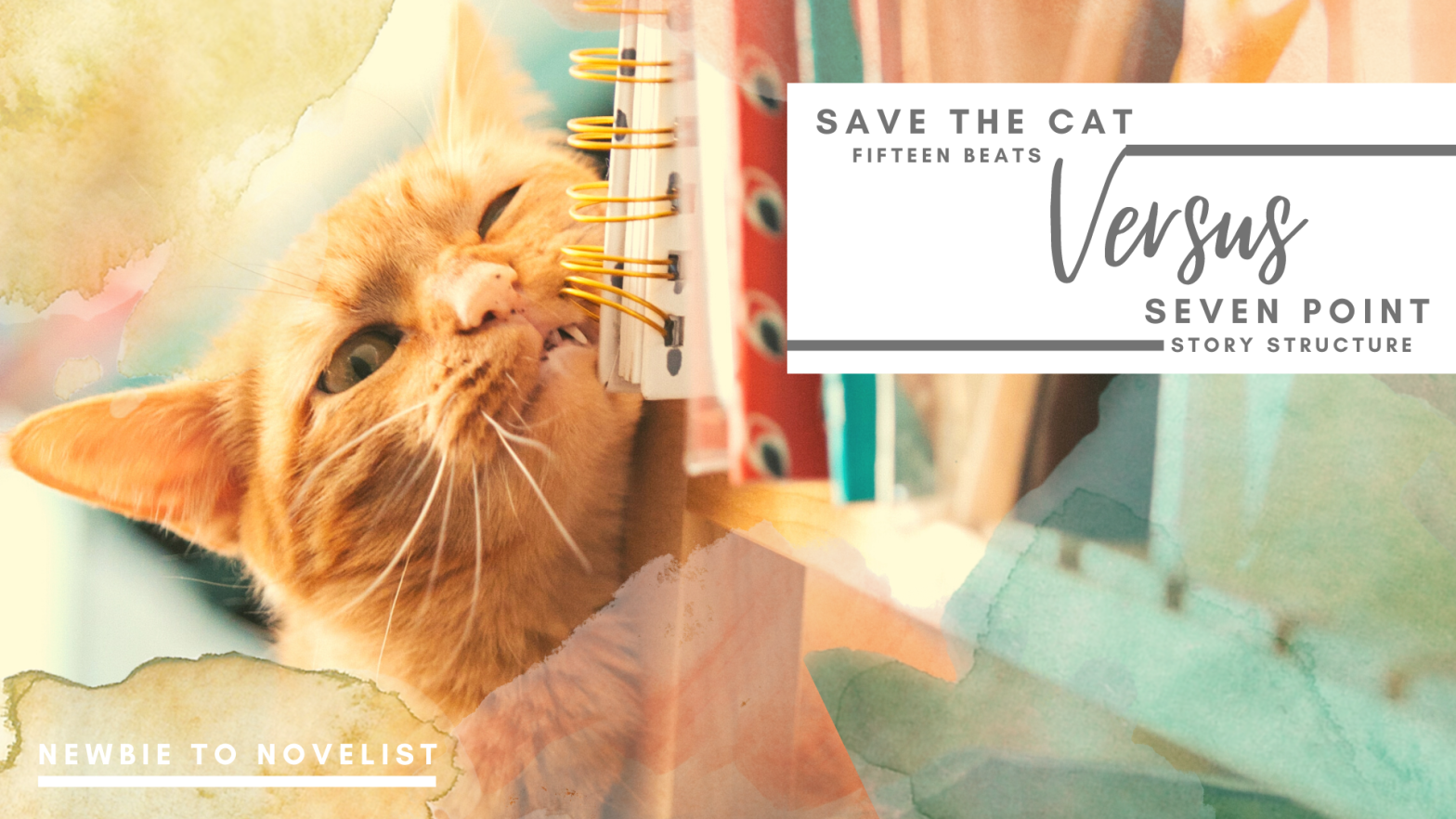Understanding Story Structure
I recently began outlining book two of the Uprising trilogy. And whenever my outlining process begins, I know I need to dust off my copy of Save the Cat! Writes a Novel by Jessica Brody. Despite the title of this post, and the fact that I use Save the Cat!, I’m not declaring it the winner.
There is no right or wrong way to do it.
I had previously mapped out my writing process of how I craft a novel from concept to creation. The Save the Cat! beat sheet is invaluable to me as a checklist to ensure I’m setting my story up for success.
Both of these approaches utilize a three act structure. Please keep in mind that these are not the only two ways to plot a novel. While studying structure, I have found that both of these examples have very close similarities that I felt it warranted a side-by-side comparison.
Where is this cat and how do I save it?
In case you aren’t familiar, Blake Snyder created The Save the Cat! Beat Sheet as a template of the 15 plot points that compose every great screenplay. Jessica Brody then came along and decided to take the same concept and adapt it to novel writing (because why fix what isn’t broken?).
Wait… Every good story needs a good hero!
Before diving into the Save the Cat! Beat sheet, Jessica Brody encourages writers to take some time to flesh out the hero of the story.
The hero should have three things:
1. A Problem––The hero’s flaws
These are the aspects about them that will transform during the arc of a character’s development. They can be intrinsic flaws (a source of conflict from within the hero) or extrinsic flaws (a setback forced upon the hero).
2. A Want––The hero’s goals
This is the A story or the story’s premise. It is the exciting problem that the reader is hoping will be solved by the end of the story.
3. A Need––The lesson to be learned
This is the B-story, otherwise thought of as the moral of the story or what the story is really about.
Once the hero has these three things, the 15 beats will sketch a path for the hero to transform from who they were at the beginning to who they are at the end of the story (and it keeps that transformation engaging and meaningful to the reader).
Overview of the 15 Beats:

- Opening Image–– That status of the character at the beginning of the story, this should oppose the final image.
- Theme Stated––A subtle allusion to what the story is really about.
- Set-Up–– Shows the hero living in their opening status, it illustrates their flaws in examples of their work, home, and social life.
- Catalyst–– Often thought of as the inciting incident. It is a moment/event that disrupts how the hero lives in their world.
- Debate–– The hero is resistant to the change that has to occur.
- Break into Two––The hero can no longer fight it; it is now time to begin their journey of change.
- B Story–– Introduces a helper character that will assist the hero in discovering the theme and eventually what they really need.
- Fun and Games––The promise of the premise, this is all the tension-filled action and adventure that the hero will encounter on their journey.
- Midpoint–– Either a false victory or a false failure. The A storyline and B storyline will co-mingle and the stakes will be raised.
- Bad Guys Close In–– Similar to fun and games, it is how the hero will recover after the midpoint before reaching their lowest point.
- All Is Lost–– The lowest point.
- Dark Night of the Soul–– How a character reacts to their lowest point.
- Break into Three–– The epiphany moment where the hero understands what they have to do to fix their problem.
- Finale–– The hero puts their plan into action and leads to the climax.
- Final Image–– The hero at the end of the story, should have changed significantly from who they were at the beginning of the story.

The Seven Point Story Structure
This approach also follows a three-act structure, and if you find all fifteen beats intimidating, it breaks things down into fewer steps.
I had originally seen this approach attributed to writer Dan Wells and his original breakdown of this approach is on YouTube videos, filmed during a live writing conference. I highly recommend watching these videos or listening to him discuss this style of story structure on the Writing Excuses podcast.
I took the liberty of splicing the fifteen Save the Cat! beats into where I find they fit within the Seven Point Story Structure.
- Hook (Opening Image/Theme Stated/Set up)— Where the character starts at the beginning (should heavily oppose where they are at the end).
- Plot turn 1 (Catalyst/Debate/ Break into 2)— This will be an event that sets the story into motion. The main conflict is introduced and the hero embarks on their journey.
- Pinch point 1 (B story/Fun & Games)— There is tension added and often the antagonist is introduced (or does something devious).
- Midpoint (Midpoint)— Instead of being reactive, the midpoint encourages the hero to become more active. Something must be done.
- Pinch point 2 (Bad Guys Closing in/All is Lost/Dark Night of the Soul)— The stakes have never been higher. The character is at the darkest moment or has lost everything.
- Plot turn 2 (Break into three)— The main character starts to move toward the resolution. They now understand what they have to do to achieve what they set out to do.
- Resolution (Finale/Final image)— The hero reaches the climax. They will either win or lose at this moment.
And the winner is…
You! As I said at the very beginning, there’s no right or wrong way to do this. But by better understanding story structure, the easier it is to craft and organize your plot––no matter the stage you are in of your story.

If you liked this article, please leave your thoughts in the comments or follow my feed on this topic and more on my Instagram feed!



2 thoughts on “Save the Cat! Fifteen Beats Vs. The Seven Point Story Structure”